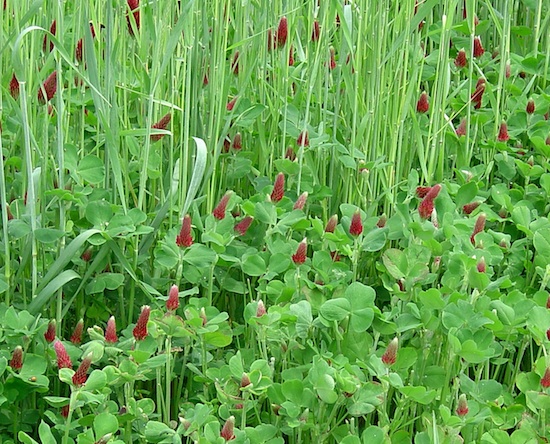With fall just around the corner, summer gardens may be looking a little anemic. Many backyard gardeners choose to let their gardens fizzle out slowly, with the first frost putting the final blow to our summer bounty. You may be daydreaming of next year’s spring garden and what you can plant to better your past efforts.
Winter cover crops
Instead of letting your summer vegetables die out and leaving the soil exposed, consider planting a winter cover crop. Cover crops are usually a grass or legume, such as clover, planted on the existing garden site to help hold and build the soil.
There benefits of growing cover crops include:
- Reducing erosion.
- Improving soil structure and reducing surface crusting.
- Increasing the water-holding capacity of the soil.
- Reducing winter weed growth.
- Reducing herbicide injury.
- Penetrating the hardpan in the winter, which improves soil relations for the next crop.
- Providing nitrogen, if the cover crop is a legume.
Soil improvement through the use of a cover crop is a long-term investment. Cover crops can and will add organic content to the soil over time.
Types of cover crops
There are two general types of cover crops – legumes and non-legumes. Legume cover crops, like vetch and clover, add nitrogen to the soil. Non-legume crops, such as wheat and rye, are preferred on erosive soils.
Crimson clover is probably the most commonly used and most desirable of the clovers grown as a cover crop. It matures earlier and produces more nitrogen and dry matter sooner than most other clovers. An excellent crop of crimson clover can produce up to 120 pounds of nitrogen per acre. However, production of 30 to 50 pounds of nitrogen is common.
Non-legume cover crops (rye, ryegrass and wheat) have several advantages. They are less expensive to establish than legume cover crops. They also provide longer and better erosion control because of more winter growth and a fibrous root system.
The major disadvantage of non-legume cover crops is that they do not fix nitrogen and usually require some nitrogen fertilizer when planted.
It is important to plant cover crops early to establish root growth before cold weather hits. This helps the crop better survive a hard winter. Plant legumes in mid-September to mid-October and plant grasses in early-October to mid-November.
Follow soil test recommendations
A soil test from your local, University of Georgia Extension office will accurately determine a cover crop’s need for lime, phosphate and/or potash. If lime, phosphate or potash are needed, apply them in the fall, just prior to preparing the seedbed.
If you are growing a legume cover crop, do not add nitrogen fertilizer. Treat the seed with the correct nitrogen-fixing bacteria (known as an inoculant). This inoculant is important to ensure good germination.
Prepare the seedbed the same way you did for your spring garden. Either remove or till in old crops. Work the soil while it is slightly moist, but not wet.
Grass type cover crops should be raked or dragged into a depth of one half inch. Clover type cover crop seed is very tiny and should only be lightly raked to provide good soil contact, but not bury the seed.
Cover crops or green manures, as they are often called, are an economical way to both protect and build the soil. They are also aesthetically pleasing as they provide a nice green color, when most things are drab and brown. When spring arrives, till in the cover crop to help feed the summer garden.








